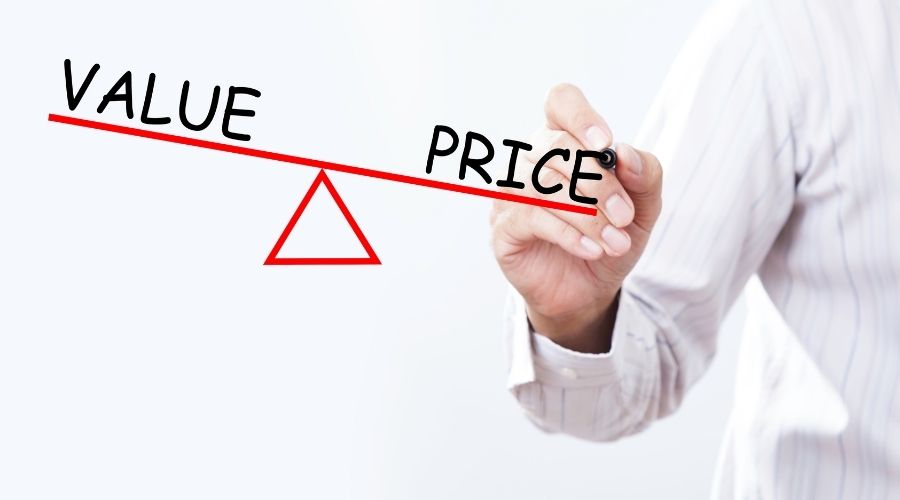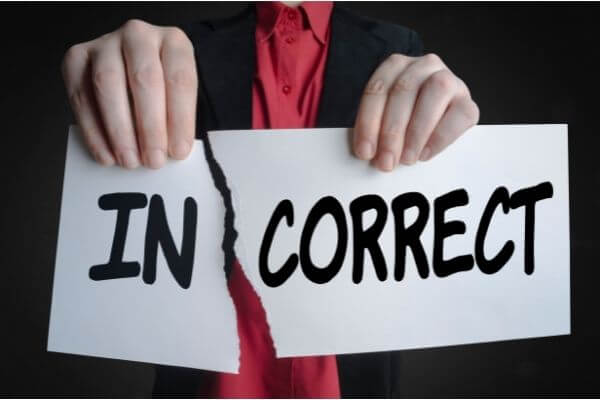
1. Clarifying the term precision balance
The term “precision balance” in the Precision Balance Application Test Method does not refer to balances of the finest calibration class, i.e. the so-called analytical and precision balances, but rather to balances of calibration class II. The German calibration law defines certain technical specifications that must be met in order to be allowed to call up the precision balances of the weighing instrument to which they are applied. However, only a small number of users are aware of this, so the first point to clarify is whether the calibration laws must be taken into account when looking for a precision balance. Validated precision balances are required by law, for example, for certain applications in pharmacies or when purchasing gold and other precious metals.
If verification is not important, a precision balance is usually understood to be a balance that achieves a very high level of measurement accuracy. Here, one understands what is subjective by the exact measurement value. For one user a precision balance with a measurement accuracy of 1 gram is sufficient, while another user requires a measurement accuracy of 0.1 milligram. It is therefore important to be clear about the measurement accuracy required to make a measurement with a new precision balance. Some users assume that the measuring accuracy of a precision balance corresponds to the resolution of the balance. However, this is wrong. If the technical data of the precision balance does not contain any separate information about the measuring accuracy, the user should be prepared for possible measuring errors of at least 3 to 4 times the measuring resolution. To be on the safe side, 10 times should be considered. If a precision balance with a resolution of 0.1 g is selected, possible measurement errors of 0.3 g to 0.4 g must be taken into account. For a factor of 10, deviations of up to 1 gram should be taken into account. If the application (e.g. recipe weighing) requires a measurement accuracy of 1 gram, a precision balance with a resolution of 0.1 gram should be selected. Deviations of up to 1 gram should be taken into account. If the application (e.g. recipe weighing) requires a measurement accuracy of 1 gram, a precision balance with a resolution of 0.1 gram should be selected. Deviations of up to 1 gram should be taken into account. If the application (e.g. recipe weighing) requires a measurement accuracy of 1 gram, a precision balance with a resolution of 0.1 gram should be selected.
Selection criteria for precision scales
2. Maximum load: After the calibration requirements and the required measuring accuracy have been defined, the maximum load is the next important criterion for precision scales. Here, the user’s wishes may be limited by technical possibilities, as the resolution and accuracy of the scale is always related to the weighing range. When the maximum weight is larger, higher measuring resolution and accuracy requires more indexing steps and therefore a more complex design and higher sensitivity of the precision scale. This is then reflected in the price and the requirements of the installation location. If the quantities to be weighed vary considerably, it often makes sense to use several scales with different maximum weights rather than just one precision scale. Depending on the material being weighed, it may also be necessary to consider whether additional containers are required for weighing. This must also take into account the maximum weight.
Models: If you compare the available scales with the appropriate accuracy and maximum load, in some cases you can choose between different designs. In addition to the most common compact scales, precision scales can also be made as suspended scales or as platform scales with a separate display. Some compact scales also offer the option of using a hook attached to the bottom of the precision scale housing for floor weighing. In the case of suspended scales, not only is the load suspended, but the precision scale itself is also suspended. Mechanical spring scales can be used as precision scales in areas where electronic components are not required or should not be used. platform scales can be used as precision scales in areas where the indicator should not be mounted in the same housing as the load cell.
3. Interfaces: In many applications of precision scales, a data transmission interface is required to output, store and evaluate the weighing data. For this purpose, RS-232 or USB interfaces are often built into the precision scales as standard. For some scales, an additional interface can be selected as an option. If the data from the precision balance is used directly for process control, the measured values can be transmitted as a signal, for example via an analogue output of 4 to 20 mA or 0 to 10 V to an evaluation or control device.
4. Platform dimensions: The platform of a compact precision scale or platform scale should fit into the contact surface of the material being weighed. The weighing platform should always be centrally or as evenly loaded as possible. This ensures that the load cell mounted underneath it is not loaded with a load contrary to its design and that the correct value can be recorded and transmitted. For liquids, powders and small parts, a suitable container must be selected to match the dimensions of the weighing platform.
5. Additional functions: Precision scales can also be equipped with additional functions. A common additional function is the piece counting function, which makes it easier to record quantities of similar small parts and to pack them in fixed quantities. More rarely, the percentage function is stored in the precision scale and can be used to calculate and display the percentage deviation of the sample to be weighed from the reference weight. Very special additional functions are density determination and moisture analysis.
The following is a brief list of points that need to be stated in advance when selecting the right type of precision balance
1. Is there a validation requirement for the intended use? (Yes/No)
2. What accuracy of measurement is required? (0.001 g / 0.01 g / 0.1 g / 1 g etc.)
3. What is the maximum load? (50 g / 300 g / 2,000 g / 6,000 g …)
4. Which design is suitable for the application (compact scale, crane scale, platform scale)?
5. Is an interface required for data transfer? (RS232 / USB / LAN / analogue output 4-20 mA – 0-10V)
6. How large must the weighing platform be?
7. Are special functions required? (piece counting, percentage function, density determination, moisture determination ……)
Confirmation
According to the approximation of the EU Directive 90/384/EEC on the law relating to non-automatic weighing instruments, precision balances must be validated within the EU if they are used, for example
: in commercial transactions, when the price of a product is determined by weighing
– in the production of pharmaceutical products in pharmacies and in analysis in medical/pharmaceutical laboratories.
– for official purposes such as the determination of fees and fines.
– Court opinion.
– In the manufacture of pre-packaged.
This list is not definitive. If you would like more information on precision balance validation, or if you are not sure if you really need a verifiable balance, you can contact your local Weights and Measures office. If a precision balance needs to be verified, this must be specified when ordering the balance. You can only choose from verifiable models and you must also specify the location of the installation – i.e. the name of the town or city and the postcode – for setting the gravity value. After how long and where the precision balance must be revalidated whether it is regulated in a specific country/region in Europe. For more information see WELMEC, the International Organisation for European National Regulatory Metrology Cooperation. on their website.
Calibration and adjustment
Calibration certificates: To meet specific quality assurance requirements, our precision scales can be supplied with a current calibration certificate and can be recalibrated annually or at other intervals specified by the user. During the calibration process, the precision scales are tested using traceable reference weights. This includes several measurements to assess the accuracy, linearity and repeatability of the weighing results. The values in the case of edge loading of the weighing platform are also recorded and registered in the calibration certificate. If the calibration determines that the precision balance does not meet the specified accuracy, it can be adjusted – i.e. readjusted – if necessary, and then recalibrated. There are two calibration options of varying complexity, one according to ISO 9000 and the other according to DIN EN ISO / IEC 17025.
User calibration and adjustment: You can also test the precision balance yourself with suitable test weights at regular intervals or before each new series of measurements to ensure correct results. If unacceptable deviations are found, the balance must be reset to the correct value. In some balances you can make your own adjustments using suitable weights via the menu function. You can find a description of the adjustment procedure in the operating instructions of precision balances with the option to adjust via the operating menu, possibly under the heading Calibration. After calibration the precision balance must be recalibrated. For this reason, a verified balance cannot normally be adjusted or the verification stamp must be destroyed in order to make the adjustment.
Automatic internal adjustment: This diagram shows a precision balance with internal adjustment weights, without housing cover and weighing platform. The automatic adjustment requires internal weights. This adjustment will automatically run in an open balance after a preset time, for example every two hours, or after a 1 °C change in temperature. Thanks to this automatic function, only a small number of erroneous measurements will occur during a working day and errors will quickly become apparent in a series of measurements. Even small temperature fluctuations that affect sensitive electronics are immediately corrected. In addition, every time a precision balance with automatic internal adjustment is switched on, a function test is run first. This self-test consists of checking the balance’s electronics and adjusting the balance using the internal adjustment weights.
When evaluating different precision balances, ask yourself the following questions.
– What is the expected weight of the lightest sample?
This will help you to determine the minimum capacity required for the precision balance. Inside the precision balance
– What is the expected weight of the heaviest sample?
This will help you to determine the maximum capacity required for your precision balance. Please note that normally the higher the maximum load the balance can handle, the less accurate the balance’s weighing capacity will be. High capacity high resolution precision balances are available; however, the cost may be prohibitive.
– What is the expected size of the sample?
This helps you to determine the size of the platform or pan required for your precision balance. The size of the platform or pan should be related to the maximum load and measurement accuracy of the balance, as the platform or pan should be constructed to ensure ideal placement of the sample in the centre of the surface. If the load is placed outside the centre of the pan, leverage will result. Although most precision balances have load cells that compensate for leverage at an angle, samples larger than the size of the pan must be placed more carefully to ensure that the centre of gravity falls within the centre of the pan. Traditionally, the more accurate the balance, the smaller the platform or pan size.
In some cases, precision balances will have an under-floor weighing function for weighing objects that cannot be placed on the balance due to their size or shape. Precision balances with an under-floor weighing function have a hook on the bottom for hanging the load.
– What level of accuracy do you need for your weighing?
This helps you to determine the resolution you need for your precision balance. If the measuring accuracy of a precision balance is not indicated separately, the basic formula for assessing the accuracy of a precision balance is that the measurement deviation is the resolution value multiplied by 3 or 4. If better accuracy is required, consider a buffer factor of 10 for precision balances. Example: If the balance has a resolution of 0.1 g, the measurement uncertainty is approx. ± 0.3 g must be assumed … ± 0.4 g (unless otherwise stated). However, if a measurement accuracy of 0.1 g is required, then you should look for a precision balance with a resolution of 0.01 g (factor 10).
Depending on the application, a calibration weight set may come in handy to verify the accuracy of the precision balance and to adjust the balance accordingly if necessary. As with any weighing equipment, precision balances can drift and increase measurement errors over time.
– What is the purpose of weighing a sample?
This helps you to determine if your precision balance requires advanced features beyond weighing. This question can only be answered by the end user of the balance. Some examples of advanced functions include: summing, tare, recipe, piece counting, hold (animal weighing), density measurement, suspension weighing and drying (moisture content measurement). For some users, the piece counting function is essential to perform a quick inventory. At the same time, other users need the piece counting function to check the integrity of the product. For product integrity applications, an indicator or light is required to confirm the desired result. While both types of user prefer the piece counting function, each has a different purpose. Not every precision balance with a piece counting function includes an indicator or light. This is why the end user should clearly define the purpose of the weighing before the precision balance can be selected according to the user’s specific criteria.
– What do you intend to do with the weight data once the weighing process is complete?
This helps you to determine whether you need an interface to connect your precision balance to a PC or printer. An interface allows the transfer of weighing data. Examples of support for data transfer include USB, RS-485 and RS-232 ports, Bluetooth and WLAN interfaces, analogue outputs and removable memory (e.g. SD card or USB stick).
– Which documentation requirements of your organisation’s quality assurance programme must the precision balance meet?
The optional ISO calibration certificate is available as an accessory for most PCE brand precision scales at an additional cost. the ISO calibration certificate is the document that performs the PRESET/ACTUAL comparison of your equipment. the ISO calibration certificate documents overload measurement deviations, linearity errors, repeatability and measurement errors.
– What is your price limit?
This helps you to determine whether an accurate balance is within your budget. After answering the above questions, your purchasing decision may be narrowed down to several different models of precision balances. Consideration should be given to the fact that the appropriate precision balance should simplify, speed up and/or make the weighing process safer or better. Therefore, it is not always worthwhile to choose the most affordable precision balance.




